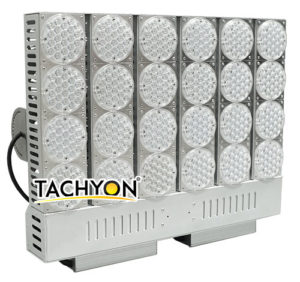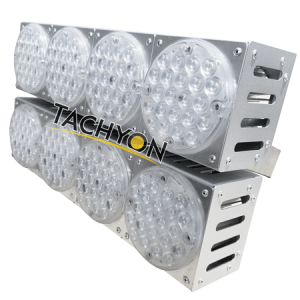The dimmer is an electrical device, which provides uninterrupted dimming function according to user requirements. There are many kinds of electric lamps on the market, but no dimmer can adjust all types of electric lamps.
There are many types of electric lights:
The traditional incandescent lamp invented by Thomas Edison,
High-voltage halogen lamp, using 230V alternating current,
Low voltage halogen lamp, using 24V power supply, there are two ways to step down 230V to 24V: (a) use a simple transformer, or (b) use an electronic switching power supply,
Fluorescent lamp/fluorescent lamp, and energy-saving tube (CFL, Compact Fluorescent Lamp) is a special type of fluorescent lamp.
LED lights based on the principle of Light Emitting Diode.
Leading-edge Phase Control
The dimming of traditional lamps uses leading edge phase control technology, which technically means that a segment of the sine wave of the voltage supply is cut off, resulting in a decrease in the energy supply and the brightness of the lamp. The sine wave is at 100% full load, and The 50% load when Yu Zhengxuanbo is cut halfway, the comparison between the two can be easily measured with a multimeter. A device called Triac is used to provide this function.
Under the action of the leading edge phase control, the voltage sine wave will maintain the voltage at 0V after passing the 0V voltage level. After the set time, the thyristor is activated and the voltage returns to the correct sine wave. The wavy line supplies voltage to the lamp. The characteristic of the thyristor is that when the voltage sine wave passes through the 0V voltage level, it cuts off the current, and must be reactivated in each sine wave cycle before the voltage can restore the sine wave form.
The leading edge phase control works well on incandescent lamps and high-voltage halogen lamps, but it is not suitable for low-voltage halogen lamps, fluorescent lamps and LED lamps, and may even cause damage.
Applied to the leading edge phase control of inductive loads
Because the transformer of the low-voltage halogen lamp itself is an inductive load. If the AC current of the load lags behind the AC voltage, the load is an inductive load, also known as a lagging load, which also means that when the voltage is 0, the current is still not 0.
This phenomenon will cause great problems for the traditional thyristor leading edge phase control dimmer. When the current is 0, the thyristor cuts off the current (not when the voltage is 0), and the result is that the final positive and negative waveforms are asymmetrical, which is equivalent to a direct current component in the output, which will be damaged A transformer as one of the loads.
For the traditional transformer used for halogen lamp dimming, an electronic device must be used to ensure that the thyristor can be switched at an appropriate time. The dimmer of this design can still be used for traditional resistive loads and can also be used for Inductive load and slight reactive load.
Trailing-edge Phase Control
The general electronic power supply (Accor) is a capacitive load, and its capacitive reactance is larger than inductive reactance, so this type of load will generate a leading current, dimming The trailing edge phase control dimmer must be used.
The trailing edge phase control dimmer cuts off the tail of the sine wave. Since the thyristor cannot provide this performance, a high-voltage metal oxide semiconductor field effect transistor (MOSFET, Metal Oxide Semiconductor Field Effect Transistor) must be used.
Universal Dimmer
When using the “edge” phase control dimming technology, the leading edge type can act on inductive loads and the trailing edge type can act on capacitive loads. However, if the load type is accidentally confused, the dimmer The load will be destroyed, or the dimmer will be burned out.
The solution is a universal dimmer.
The universal dimmer will first detect whether the load is a capacitive or inductive load, and then select the leading or trailing edge phase control. To ensure that the detection result is correct, the user must be sure that only one load is connected when the power is turned on, and must understand that problems will occur when the load changes. However, the biggest challenge of the universal dimmer is that its price is much higher than that of the general dimmer.
Fluorescent lamp
Traditional fluorescent lamps are not dimmable, but there are still some specially designed transformers that allow fluorescent lamps to achieve dimming effects. These transformers are integrated into the socket part of the lamp, and fluorescent lamps are simply called adjustable Light fluorescent lamp, but its price is quite high.
For the dimming of general fluorescent lamps, the trailing edge phase control dimmer or universal dimmer can be used. The manufacturers of the new generation of fluorescent lamps cleverly compensate and adjust the reactive load of the fluorescent lamps, so that the general leading edge phase control dimmers can be applied to fluorescent lamps.
LED lights
The dimming effect of LED lights can be very good, but as far as the dimmer technology is concerned, neither the leading edge nor the trailing edge phase control technology is suitable. There is a pulse width modulation (PWM, pulse width modulation) technology that is suitable for LED lamp dimmers. Therefore, when purchasing LED lamp dimmers, general dimmers on the market are not suitable.
At present, there are also European brands that have launched LED “bulbs” that are compatible with common cutting-edge phase-controlled dimmers, which can directly replace traditional incandescent bulbs. You can pay attention to it when buying.
What is PWM dimming?
The basic principle of pulse width modulation (PWM): The control method is to control the on and off of the switching devices of the inverter circuit, so that a series of pulses of equal amplitude are obtained at the output end, and these pulses are used to replace the sine wave or the required waveform. That is, multiple pulses are generated in the half cycle of the output waveform, so that the equivalent voltage of each pulse is a sinusoidal waveform, and the obtained output is smooth and has less low-order harmonics. By modulating the width of each pulse according to certain rules, the output voltage of the inverter circuit can be changed, and the output frequency can also be changed.
For example, if the sine half-wave waveform is divided into N equal parts, the sine half-wave can be regarded as a waveform composed of N pulses connected to each other. These pulses have the same width and are equal to π/n, but the amplitudes are not equal, and the top of the pulse is not a horizontal straight line, but a curve, and the amplitude of each pulse changes according to the sine law. If the above-mentioned pulse sequence is replaced with the same number of rectangular pulse sequences of equal amplitude and not equal width, the midpoint of the rectangular pulse and the midpoint of the corresponding sine halves are coincident, and the area of the rectangular pulse and the corresponding sine part (i.e. impulse) If they are equal, a set of pulse sequences is obtained, which is the PWM waveform. It can be seen that the width of each pulse changes according to the sine law. According to the principle of equal impulse and same effect, PWM waveform and sine half wave are equivalent. For the negative half cycle of the sine, the same method can be used to obtain the PWM waveform.
In the PWM waveform, the amplitude of each pulse is equal. To change the amplitude of the equivalent output sine wave, you only need to change the width of each pulse according to the same proportional coefficient. Therefore, in the AC-DC-AC inverter, The pulse voltage output by the PWM inverter circuit is the amplitude of the DC side voltage.
According to the above principles, after the sine wave frequency, amplitude and the number of pulses in a half cycle are given, the width and interval of each pulse of the PWM waveform can be accurately calculated. According to the calculation result, the on-off of each switching device in the circuit is controlled, and the required PWM waveform can be obtained.
For LED luminosity adjustment
Simply put, for example, if you have a 5V power supply and want to control the brightness of a lamp, there is a traditional method, which is to connect an adjustable resistor in series and change the resistance, and the brightness of the lamp will change. This adjustment method requires artificial rotation of the sliding rheostat, which is also an adjustable resistor.
Another method is PWM adjustment. Instead of a series resistor, a switch is connected in series. Assuming that within 1 second, the switch is turned on for 0.5 seconds and turned off for 0.5 seconds, then the light will be on for 0.5 seconds and off for 0.5 seconds. If this continues, the light will flash. If you increase the frequency a little bit, such as 1 millisecond, 0.5 milliseconds on, 0.5 milliseconds off, then the flashing frequency of the light is very high. We know that if the flicker frequency exceeds a certain value, the human eye will not feel it. So, at this time, you can’t see the flickering of the lamp, only see that the brightness of the lamp is only half of the original.
In the same way, if within 1 millisecond, the light is turned on in 0.1 milliseconds and turned off in 0.9 milliseconds, then the brightness of the light is only one tenth of the original.
This is the basic principle of PWM. The reason is as simple as that. There are several types of specific PWM. Generally speaking, they maintain a certain voltage or current, but change the turn-on and turn-off time within a certain period.
This is equivalent to maintaining the conduction, but changing the voltage or current. Such a PWM control method is very convenient to be applied to digital control circuits. Because it is more difficult for a computer to control an adjustable resistor, and the adjustable resistor also has the inherent instability problem of analog circuits.
How to realize PWM dimming
LED is a diode, it can realize fast switching. Its switching speed can be as high as microseconds or more. It is unmatched by any light-emitting device. Therefore, as long as the power supply is changed to a pulse constant current source, the brightness can be changed by changing the pulse width. This method is called pulse width modulation (PWM) dimming method. The waveform of this pulse width modulation is very regular. If the period of the pulse is tpwm and the pulse width is ton, then the duty ratio D (or porosity ratio) is ton/tpwm. The brightness of the LED can be changed by changing the duty ratio of the constant current source pulse.
The specific method to realize PWM dimming is to connect a MOS switch tube in series with the LED load, and the anode of this series of LEDs is powered by a constant current source. Then a PWM signal is applied to the gate of the MOS tube to quickly switch the string of LEDs. So as to achieve dimming. There are also many constant current chips with a PWM interface. It can directly receive the PWM signal, and then output the control MOS switch tube.
Advantages of Pulse Width Modulation Dimming (PWM)
- No chromatographic shift will occur. Because the LED always works between the full amplitude current and 0.
- It can have extremely high dimming accuracy. Because the pulse waveform can be controlled to a very high precision, it is easy to achieve a precision of one ten thousandth.
- It can be controlled by combining with digital control technology. Because any number can be easily transformed into a PWM signal.
- Even if the light is dimmed in a wide range, there will be no flicker. Because it will not change the working conditions of the constant current source (boost ratio or step-down ratio), it is less likely that problems such as overheating will occur.

Shortcomings of PWM dimming and solutions
- The choice of pulse frequency.
Because the LED is in a fast switching state, if the operating frequency is very low, the human eye will feel flicker. In order to make full use of the residual visual phenomenon of the human eye, its operating frequency should be higher than 100 Hz, preferably 200 Hz.
- Eliminate the howling of the dimming bow.
Although the human eye cannot detect above 200 Hz, it is within the range of human hearing until 20 kHz. At this time, it is possible to hear the sound of buzzing.
There are two ways to solve this problem. One is to increase the switching frequency above 20k Hz, out of the range of human hearing. But too high frequency will cause some problems, because the influence of various parasitic parameters will cause the pulse waveform (front and rear edges) to be distorted, which reduces the accuracy of dimming.
The other way is to find out the sound-producing device and deal with it. In fact, the main sounding device is the ceramic capacitor at the output end, because ceramic capacitors are usually made of high dielectric constant ceramics, which have piezoelectric characteristics. Under the action of 200Hz pulse, mechanical vibration will be produced and sound will be produced. The solution is to use tantalum capacitors instead. Yes, tantalum capacitors with high withstand voltage are difficult to obtain, and the price is very expensive, which will increase some costs.






